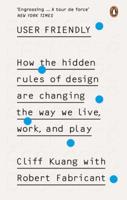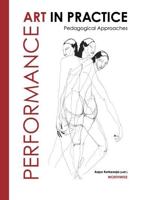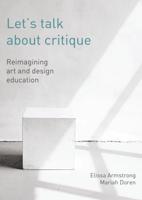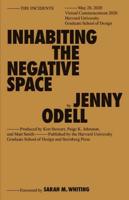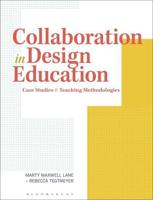Publisher's Synopsis
lt;p>Just as the term design has been going through change, growth and expansion of meaning, and interpretation in practice and education - the same can be said for design research. The traditional boundaries of design are dissolving and connections are being established with other fields at an exponential rate. Based on the proceedings from the IASDR 2017 Conference, Re:Research is an edited collection that showcases a curated selection of 83 papers - just over half of the works presented at the conference. With topics ranging from the introduction of design in the primary education sector to designing information for Artificial Intelligence systems, this book collection demonstrates the diverse perspectives of design and design research. Divided into seven thematic volumes, this collection maps out where the field of design research is now. Cultura: A Communication Toolkit for Designers to Gain Empathic Insights Across Cultural Boundaries - Chen Hao, Annemiek van Boeijen, Pieter Jan Stappers Designing successful products and services that people like requires an understanding of the context and the aspirations of those people. Over the past decade, a range of methods has been developed to help designers gain such empathy. These have worked well when designer and target user share a cultural context. However, designers often find it difficult to empathize with the user insights of individuals from a culture beyond their first-hand experience. To help designers step beyond this limitation, those user insights need to be placed in a larger understanding of the cultural context. In this paper, we present Cultura: a toolkit that uses nine cultural aspects based on cultural models, informing designers about user insights in a broader cultural context. The toolkit was evaluated in design sessions with four design teams. The findings indicate that Cultura provides inspiration and motivation for designers to gain empathic insights into users beyond their own cultural boundaries and to make effective designs for people. Graphic Designers as Cultural Innovators: Case Studies of Henry Steiner and Kan Tai Keung • Tian Yao, Ilpo Koskinen It is common to see graphic design copies of foreign models or other Chinese designers. These designers are apathetic toward the work and neglect its ongoing challenges, including the need for constant innovation. In contrast, there are masters who use Chinese culture in creative ways and achieve outstanding reputations all over the world. The reasons design masters choose Chinese culture as a theme for their graphic work and the unique ways in which they symbolize cultural resources and knowledge are explored and explained in this study. This study also illustrates how traditional culture can become a potential innovative strategy by applying a systematic and culture-based methodology. The case studies presented concern the first generation of graphic designers in Hong Kong: Henry Steiner and Kan Tai Keung. The preliminary results of the two case studies show very positive outcomes for cultural interpretation becoming a new innovative stream of graphic design. Cultural Differences in Aesthetic Preferences: Does Product-to-Context Match Matter? • Tseng-Ping Chiu, Carolyn Yoon, Shinobu Kitayama, Colleen Seifert Western cultures focus on salient objects and use categorization for purposes of organizing the environment (an analytic view), whereas, East Asians cultures focus more holistically on relationships and similarities among objects when organizing the environment (a holistic view). Previous research has shown that cognitive approaches differ between cultures: European Americans prefer an analytic style, and East Asians tend to use a holistic style. However, little is known about how cultural differences in cognition relate to aesthetic preferences. In this paper, we explored whether cultural differences arise in preferences for products set in matching vs. mismatching contexts. Participants in a laboratory experiment included European Americans and East Asians. Individually, they viewed images of a variety of furniture products (chairs, coffee tables and floor lamps) and rated their aesthetic appeal. Each product type appeared in three different contexts: matching (target product shown in its usual in-home context); mismatched (target product shown in an unusual in-home context) and neutral (the target product shown on a white background). For both cultural groups, products were judged to be more aesthetically pleasing in the matching than in the mismatched context. However, ratings for products in mismatching contexts were significantly higher among East Asians. Our findings suggest that those with holistic views (East Asians) are more tolerant of mismatches than are those with more analytic views (European Americans). The implications for product and marketing design include greater attention to context presentation. Discourses on Japanese Lifestyle in Early Modern Design: A Turning Point from Westernization to Modern Design • Yoshimune Ishikawa Low-seated chairs for tatami mats that are characteristic of Japanese-style interior appeared after late 1940s. This article focuses on the ambivalence between Western lifestyles and Japanese lifestyles by tracing the comments of designers, critics, magazines and so forth to clarify a background of them. The introduction of chairs in Japan was actually involved, by definition, in a dichotomy between sitting on the floor and in chairs, which therefore was far from the domestic practicality of lifestyles among the public. Then we have to observe the two points for the introduction of chairs to break through this rigid situation: (1) how did the public establish definition of chairs outside the Westernization? This article grasps the fact that the artisans and early designers accumulated their experience of producing chairs from scratch, through trial and error. (2) How did the relation between sitting on the floor and in chairs break out of the dichotomy, through ambivalence? This article focuses on the fact that the public enjoyed the physical relaxation offered by the mix of sitting on the floor and in chairs. This constituted the domestic practicality of chairs for the Japanese. Therefore, such experiences of making and using chairs can be summarized as the awakening of a universe in the distance between the floor and the seat-height of Western chairs. It was a new frontier for Japanese designers, and low-seated chairs were born in this space. This article concludes that it marked the transition from Westernization to Japanese modern design. Using Practice-Led Industrial/Product Design Research to Explore Opportunities to Support Manufacturing-Related Enterprise in Overseas Development Assistance (ODA) Countries • Mark Evans, Timothy Whitehead The profession of industrial/product design has the capacity to support wealth generation through a product-driven supply chain that extends across services that include manufacturing, distribution, sales and maintenance. Moving away from the more typical manufacturing approaches of developed countries, where the resources available to support designers employ advanced technologies and materials, this paper discusses an on-going UK Arts and Humanities Research Council-funded project to explore ways in which industrial/product design can provide opportunities for entrepreneurship and employment in countries on the Organization for Economic Co-operation and Development (OECD) Development Assistance Committee (DAC) List and receive Overseas Development Assistance (ODA). Through practice-lad research with participants from Uganda, Kenya, Indonesia and Turkey; industrial/product design educators/researchers/practitioners shared knowledge and expertise and engaged in creative activity to translate propositions into proposals with the potential for manufacture in each of the four countries. The findings, articulated product visualizations, indicate significant potential to support manufacturing in countries in a variety of levels of economic development by adding value to the packaging of traditional foods; integrating low-cost imported components to add value to indigenous crafts and materials; producing contemporary furniture designs using materials that can be considered as traditional materials; and employing unorthodox and unexpected materials. Preserving Craft Heritage by Forging Rural-Urban Connections • Haodan Tan, Huaxin Wei, Eli Blevis This study aims to explore the difficulties of preserving cultural heritage in rural areas and to inform better designs of computer systems to support such preservation. In this case study, we observed and documented craft cultures in three rural villages in China. Our methods include photo-ethnogra.



